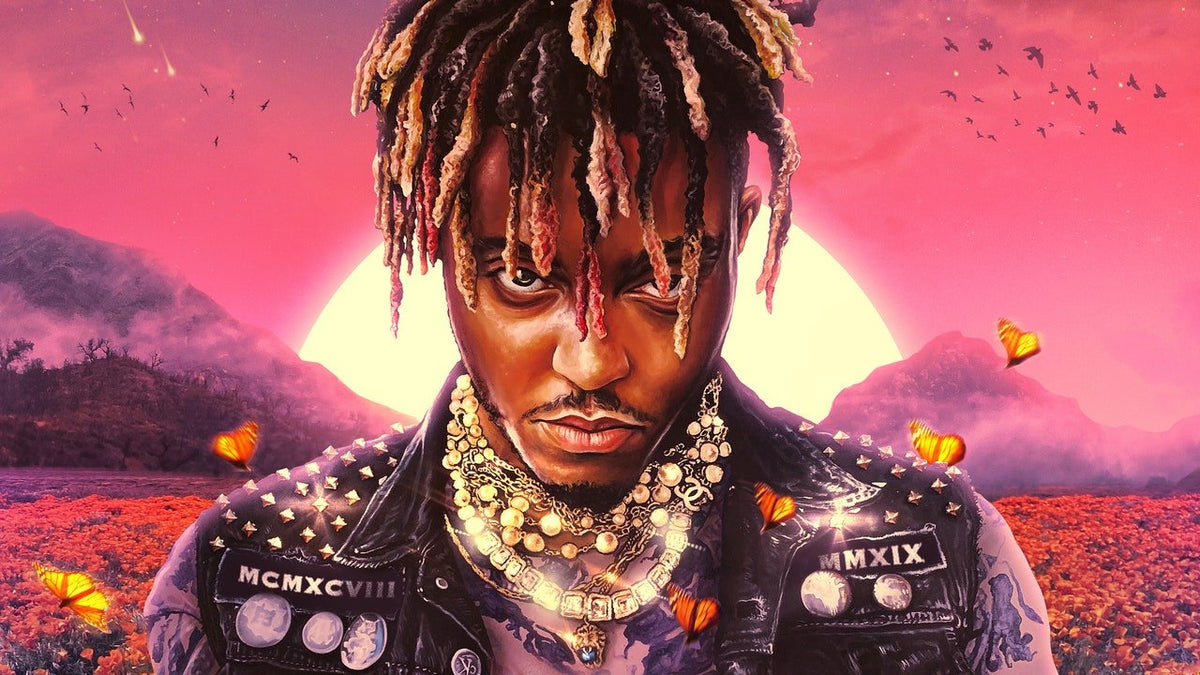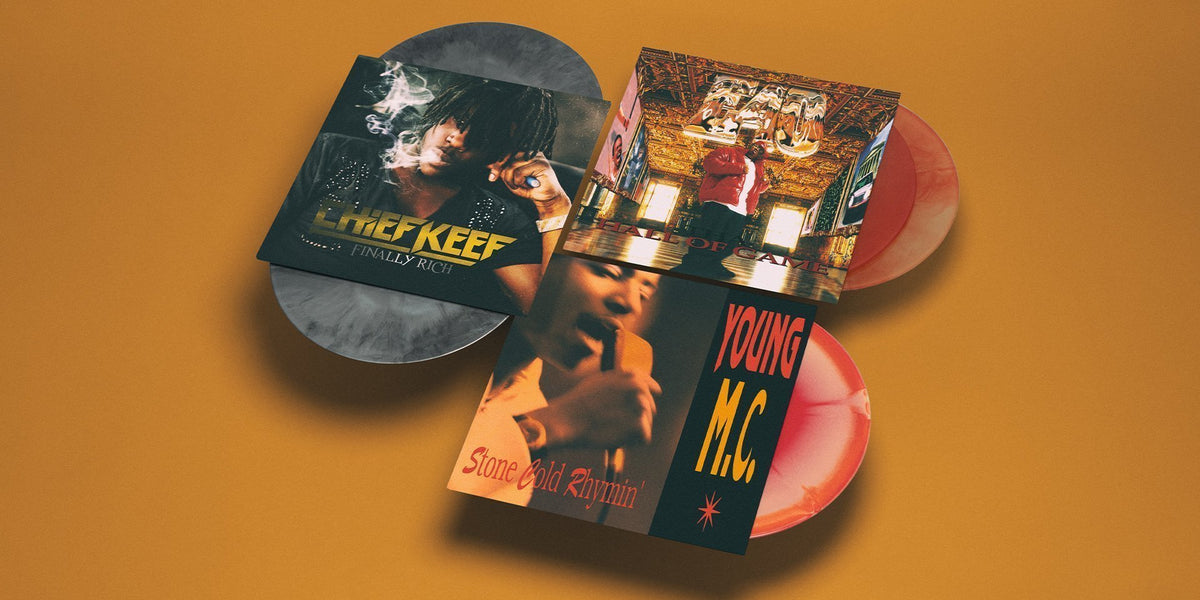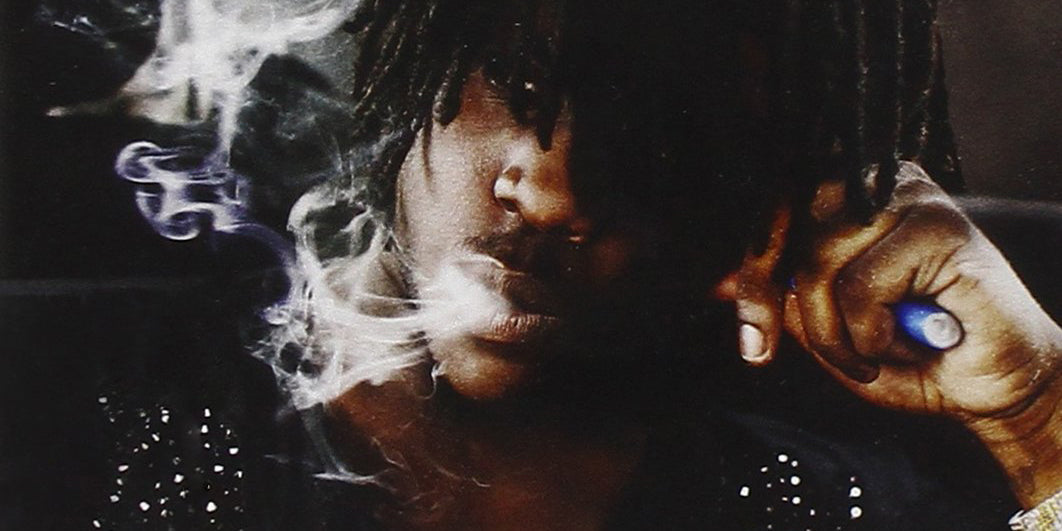Chief Keef and the Drill Wave
A primer mapping the artists he influenced, in Chicago and beyond
Black Chicago culture practically smacked the country on its ass in an unprecedented victory lap in 2012. It was a monumental year where we witnessed the rise of former Chicago Bull and then-reigning MVP Derrick Rose, former president Barack Obama winning re-election as the U.S.’s first Black president, and the hostile takeover of the infamous hip-hop subgenre drill by the 16-year-old enigma Chief Keef. And while Keef, born Keith Cozart, did not invent drill (that credit goes to the late Pac Man) no one — beyond Kanye West, at the time — rocked the world the way he did that year when he double-fisted pop culture with his mixtape Back from the Dead and, later that year, his debut album, Finally Rich.
Feared and despised by the City of Chicago and rap purists alike, Keef blew up in a Chicagoland that, as it witnessed those landmark moments, suffered a heartbreaking year of gun violence, tallying over 500 homicides, while still reeling from the police shooting of Rekia Boyd — all under the notorious former Chicago mayor and vocal Chief Keef opp, Rahm Emanuel. All of this was happening at the same time that the way we digitally consumed music was changing; drill music was growing in popularity between the tail end of the “blog era” and the height of free mixtape websites, at the early beginnings of the streaming wars and gang culture becoming viral on social media. Finally Rich was a culmination of all of those moments, as the tide was turning in Chicago’s favor.
The young man who made his native Parkway Gardens (aka O-Block) famous had a unique je ne sais quoi that went beyond his music. Hidden behind his growing locs at all times was a musical magnet for controversy. He didn’t speak much in interviews and, like the lore of most American rock musicians, he was a “rebel without a cause,” but marred with generations of racial oppression in Chicago. In spite of this, he presented a kind of drill rap that was menacing, yet gleefully infectious, and surprisingly nimble on a beat — as presented on the mesmerizing “No Tomorrow.” Add his looming persona and you have a rare, generational cult icon that even has Billie Eilish singing his songs in karaoke bars.
Compared to the mixtape, Back from the Dead, Finally Rich was a case of turning the unstoppable Jason Voorhees of Chicago rap, Chief Keef, into Uber Jason as Interscope’s big-budget polish enhanced the commercial appeal of some of his most raw songs, turning viral street hits — like the classic tag team with Lil Reese, “Don’t Like,” and “3Hunna” — into platinum-selling, Billboard chart-topping hits. Initially, upon its release, I admittingly preferred the rough and raw sound from BFTD because, to me, it accurately captured the cold, grim nature of the streets of Chicago at the time. As time went on, however, I grew to appreciate the glossy, glittery production and mixing on Finally Rich as it “future-proofed” the music in a way that still sounds current after 10 years, especially over Young Chop and Mike WiLL Made-It’s production and collaborations with Rick Ross, French Montana and Young Jeezy.
After the album went Gold, many, many artists would be influenced by him and the drill wave as whole, leading to drill movements across the globe. In honor of the 10th anniversary of Finally Rich, here are 11 albums, mixtapes and songs that are merely a taste of how ubiquitous and wide-spread his influence has become over the past decade.
Kanye West: Yeezus (2013)
It can be argued that despite Chief Keef and drill music boiling hotter than a pot of stew in 2012-’13, it would not have been a nationwide staple if fellow Chi-Town all-star Kanye West had not took it upon himself to give us the earth-shattering “I Don’t Like” remix with Pusha T, Jadakiss and Big Sean. And it’s not a coincidence that not too long after Finally Rich solidified drill’s commercial potential, Yeezy would tap into the deepest roots of drill music with one of his most polarizing albums at the time, Yeezus.
With the help of Keef, Young Chop and King Louie, Ye masterfully manipulated the dark, booming and frantic sound of drill and elevated it into a higher artform of music like no one had done before. “Hold My Liquor” was a rare glimpse of Keef’s melodic talents being used as an instrument, while Chop’s sound on the table has a more eclectic range that hadn’t been seen on his own production prior to this. With its simpler songwriting and darker sonics, Yeezus shows us how Chief Keef even influenced legendary contemporaries, including Yeezy himself.
Lil Durk: Signed to the Streets (2013)
At the height of the Glory Boyz (now known as Glo Gang) and the OTF collective’s first taste of nationwide notoriety, Lil Durk was one of the principal figures out of the original collective of Black Disciple rappers. He not only helped pioneer the sound of drill in his own way, but was one of the first collective members to sign with a major label (Def Jam).
After breaking through with his own mixtapes around the same time Chief Keef was heating up between 2011 and 2012, Durk made waves with the first installment of the Signed to the Streets series in 2013. Singles like “Competition” with Lil Reese and “52 Bars, Part 2” made Durk’s standout mixtape a landmark release that came from the first of drill music at the time.
G Herbo: Welcome to Fazoland (2014)
Not too long after Chief Keef and the Glory Boyz became breakout sensations in Chicago, a wave of young, up-and-coming rappers from various neighborhoods across the city saw this as a lucrative opportunity to become stars themselves. Enter Lil Bibby and G Herbo, one of the more lyrical and impactful duos from drill, who became viral sensations after they dropped their breakout hit “Kill Shit” in 2012. Not too long after Bibby released his “Free Crack” mixtape. G Herbo, then known as Lil Herb, would drop his critically acclaimed effort Welcome to Fazoland in 2014.
Like Keef, Herbo painted a visceral picture of the grim realities of living on the South Side of Chicago, albeit in more of a traditionally lyrical fashion, combined with the distinct elements from drill along with Kanye-esque soul sampling. Songs like “Fight or Flight,” “On My Soul” with Lil Reese and “On The Corner” with Lil Durk all highlight how Keef influenced rappers with radically different styles.
Bobby Shmurda: Shmurda She Wrote (2014)
As Chief Keef and drill music made a nationwide impact on hip-hop, Brooklyn’s own Bobby Shmurda and Rowdy Rebel would become Brooklyn and New York City drill’s earliest pioneers, long before the subgenre would be influenced by UK drill’s production. Prior to his incarceration in 2016, he became one of hip-hop’s hottest rappers with the success of “Hot Nigga” in 2014, leading up to his debut EP, Shmurda She Wrote.
Shmurda She Wrote stood out among the pack by utilizing many of the distinct lyrical elements that brought fans to drill in the first place, but pairing them with true-to-life New York narratives over more NYC-centric production courtesy of Jungle Beats. And while Bobby’s flamboyant style and outgoing persona was the radical opposite of Keef’s more brooding and introverted nature, a closer look at the finer detail of his music and videos displays a strong influence from Chief Keef’s own art.
Katie Got Bandz: Drillary Clinton 3 (2015)
It can’t be said enough that Katie Got Bandz is one drill music’s most influential women who broke out among a newer wave of female artists from the early drill movement across Chicago like Sasha Go Hard, Shady, Tink and Dreezy, to name a few. As she earned her notoriety with her music and being then-label mates with drill icon King Louie around the same time as Keef’s rise to power, Drillary Clinton 3 would be the tape that made her into a household figure. And much of what made Katie a staple in Chicago — such as her brazen, yet simplistic lyricism and commanding delivery — was fully refined on Drillary Clinton 3, as she came out the gate with Chicago classic hits like “Pop Out” and “Y U Mad.”
67 & Giggs: “Let’s Lurk” (2016)
For years, UK drill in its own right earned respect and infamy by producing its own hits that would land on UK Top 40 charts and influence the States, leading to the rise of BK drill, while garnering scrutiny from their respective governments for viral videos that many argued led to violence in the streets. Rappers like the group 67 and Drake affiliate Giggs would deliver one of UK drill’s brightest moments with international mega hit “Let’s Lurk.” And while standing on its own sound, “Let’s Lurk” still doesn’t stray too far away from Keef’s influence through their monotone-yet-intense deliveries, backed by true-to-life gang affiliations.
YoungBoy Never Broke Again (NBA YoungBoy): “38 Baby” (2016)
Despite being involved in a heated feud with fellow drill pioneer Lil Durk, YoungBoy Never Broke Again, aka NBA YoungBoy, has always cited Chief Keef as one of his main inspirations for becoming a rapper. And while stylistically other Louisiana artists like Boosie BadAzz have influenced his sound — and other younger southern rappers influenced by drill — in a way that makes it sound separate from drill as we know it in the North, the teenaged YoungBoy would become the down south answer to Keef in every other way with the hard-boiled viral hit, “38 Baby.”
Playboi Carti: Die Lit (2018)
Not too long after the popularity of drill music came a massive wave of younger artists, more unique and controversial, who became popular via SoundCloud. Platinum-selling rappers like Trippie Redd, 6IX9INE, Lil Uzi Vert, 21 Savage, YoungBoy Never Broke Again, Juice WRLD and Playboi Carti, to name a few, have all cited Chief Keef as one of the biggest influences in hip-hop. And while Playboi Carti has masterfully crafted his own brash, carefree, yet rambunctious style over the years, Keef’s influence can be felt all across the Atlanta rapper’s explosive classic, Die Lit.
On Die Lit, Carti’s sound is caught between a dreamscape of drill-meets-trap inspired 808s while his flow and loose, guttural ad-libs are carefree; he matches Keef’s own influence but without being a copycat. In fact, the collaborations with Keef himself and one of the staples of UK drill, Skepta, feel right at home.
Juice WRLD: Death Race for Love (2019)
The late, great sensation from the South Suburbs of Chicago, Juice WRLD is arguably one of drill music’s most successful indirect contributions to music with his unprecedented rapid success over the course of two and a half years. Even though the rapper born Jarad Higgins did not make what one would consider drill music per se, Keef’s influence is evident from the style of locs to his various flows on his more lyrically aggressive songs like “Syphilis,” and his party cuts like “Big.” More than any other record he’d create before and after Death Race for Love, his major-label debut highlights how Keef’s flows and cadences influenced a younger crop of musicians after him.
Billie Eilish: WHEN WE ALL FALL ASLEEP, WHERE DO WE GO? (2019)
Pop sensation Billie Eilish is not a drill rapper by any means, but she has long been a fan of many rappers who came from both drill and the SoundCloud wave, with Keef being one of them. However, this doesn’t mean her music itself has escaped the influence of the menacing sound that Keef and Young Chop cultivated with Finally Rich. While the content of her debut album WHEN WE ALL FALL ASLEEP, WHERE DO WE GO? comes from a radically different perspective, the album subtly maintains a bold and dangerous core sound that one could argue is an indirect derivative of Young Chop’s pulsing and intimidating drums (like on “xanny” and “bad guy”). In fact, a close listen at “bad guy” quietly shows aspects of Chief Keef’s own melodic pattern that he’s displayed on his own hooks.
Yaw Tog: “SORE” featuring O`Kenneth, City Boy, Reggie, Jay Bahd (2020)
With drill being solidified as one of the most dominant subgenres of hip-hop since trap music, it wouldn’t be long until it would take hold and become an outlet for oppressed and impoverished youth across the world. With its infusion of American culture and Chicago drill, the Ghanaian drill scene in particular would break out with Yaw Tog being one of its premiere youngsters.
“SORE” is a culmination of the distinct yet contrasting sounds that both Chicago and Brooklyn drill innovated over the years, while the visuals carry a strong similarity to Chief Keef’s visceral “I Don’t Like” video with rowdy, shirtless, red bandana-clad youngers joining each other in fellowship. And while the production itself sounds more rooted in UK/BK drill, the singsongy flows that distinctly bring to mind fellowshipping with one another in drunken passion (à la Keef’s “No Tomorrow”) can be heard all over the hook for “SORE.”
Related Articles
Join the Club!
Join Now, Starting at $36Pages








